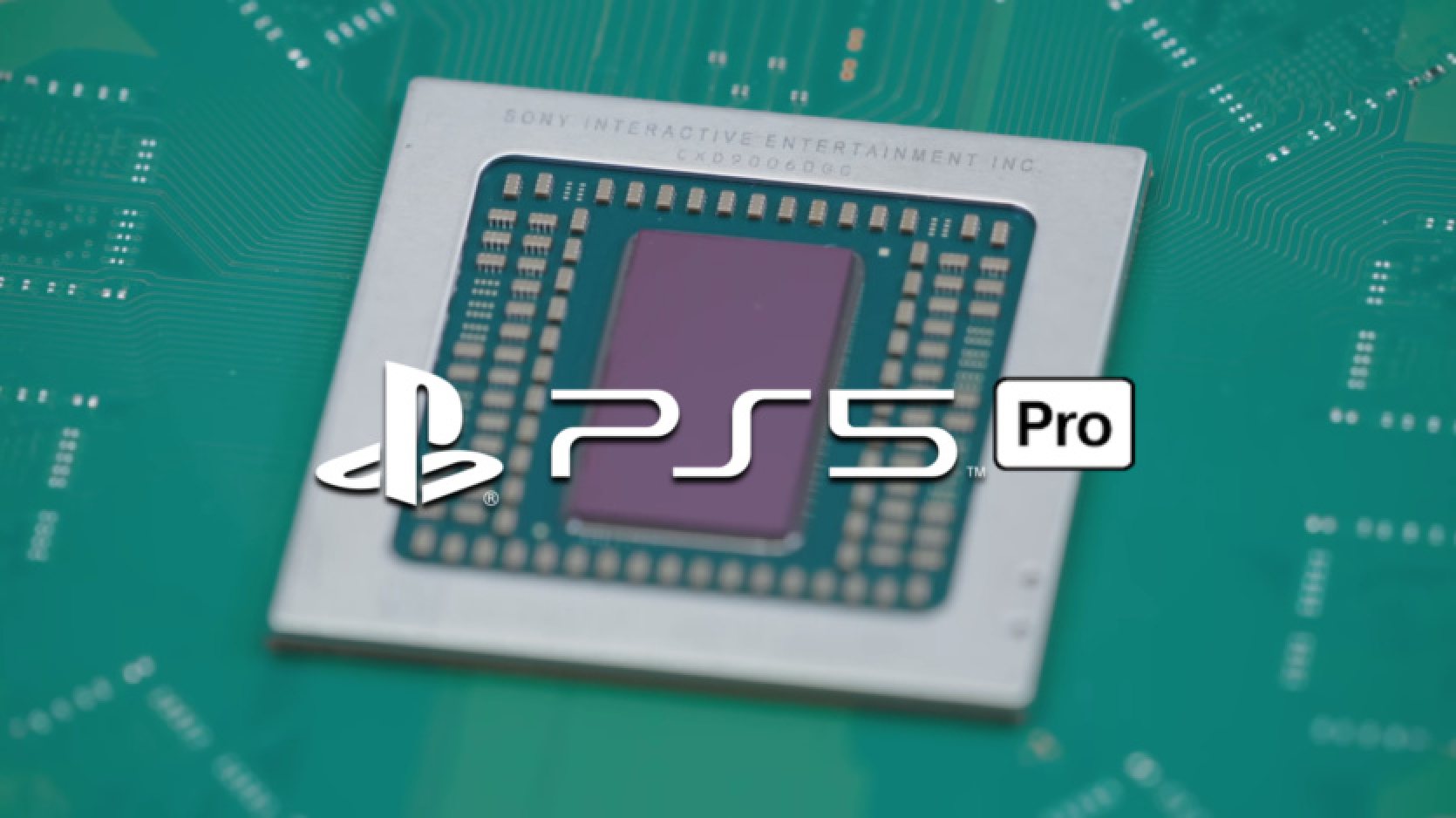Recent leak of the PS5 Pro specifications (codenamed Trinity) has finally dispelled all doubts - the new Sony console will be released this fall. What exactly can gamers expect from this mid-gen console?
Experts from the Digital Foundry channel, known for their detailed technical analysis of modern gaming technologies and graphics, along with insider Tom Henderson, confirmed the leak of internal documentation for the PS5 Pro. By the way, Sony seems to be conducting an internal investigation and will likely strengthen internal security measures. The editors of Digital Foundry released a special episode of the podcast Direct Special, lasting over an hour, dedicated to analyzing the upgrade of the console, which was released at the end of 2020 and recently entered "the second half of its life cycle".
Specifications (preliminary) of the PS5 Pro. Comparison with PS5, PS4/PS4 Pro
First of all - the preliminary key technical specifications of the PS5 Pro. For simplicity and convenience, we have compiled the data into a table and indicated the corresponding parameters of the current PS5, as well as a couple of PS4/PS4 Pro
| PS5 | PS5 Pro | PS4 | PS4 Pro | |
| GPU | 36 AMD RDNA2 compute units, up to 2.23 GHz (variable frequency) | 60 AMD RDNA3 compute units, 2.18 GHz | 18 Radeon GCN compute units, 800 MHz | 36 enhanced GCN compute units, 911 MHz |
| CPU | 6 nm, 8 cores/16 threads, AMD Zen 2, up to 3.5 GHz (variable frequency) | 6 nm, 8 cores/16 threads, AMD Zen 2, up to 3.85 GHz (variable frequency) | 28 nm, 8 cores/16 threads, AMD Jaguar, 1.6 GHz | 16 nm, 8 cores/16 threads, AMD Jaguar, 2.1 GHz |
| RAM, interface width and bandwidth | 16 GB GDDR6 (14 Gbps), 256-bit, 448 GB/s | 16 GB GDDR6, (18 Gbps), 256-bit, 576 GB/s | 8 GB GDDR5, 256-bit, 176 GB/s | 8 GB GDDR5 (+ 1 GB DDR3), 256-bit, 218 GB/s |
| Available memory for games, GB | 12.5 | 13.7 | 5 | 5.5 |
| Theoretical performance, TFLOPs (FP32) | 10.3 teraflops | 33.5 teraflops | 1.8 teraflops | 4.2 teraflops |
| Maximum power consumption (during games), W | 205 | n/a | 148 (79 — PS4 Slim) | 154 |
| Recommended retail price in the USA | $500 ($400 for the discless version) | $600 (expected) for the model without a disc drive | $300 | $400 |
Main differences of the PS5 Pro - key theses of the Digital Foundry analysis
- As for the CPU of the PS5 Pro, no major changes are expected here, except for the increase in the maximum operating frequency to 3.85 GHz (+10%). How this turbo mode will benefit games in practice is not yet very clear. More and more games on current-gen consoles are hitting CPU bottlenecks, but a noticeable increase in frame rates when transitioning from PS5 to PS5 Pro is unlikely. According to Richard Leadbetter from Digital Foundry, restrictions in games that rely more on CPU will not disappear, and 30 fps in such games on the PS5 will not magically turn into super smooth 60 fps on the PS5 Pro. At the same time, these 10% in turbo mode can provide a more stable frame rate in games with target 30 fps, which currently have issues due to CPU limitations.
- The main difference between the PS5 and PS5 Pro lies in the GPU - a rough increase in compute units (from 36 to 60), as Microsoft previously did in the architecture of the Xbox Series X, will provide an increase in nominal performance from 10.3 teraflops to 33.5 teraflops, while the actual performance will increase by about 45% (this is the value indicated by Sony in the developer documentation). In practice, ray tracing performance will increase 3-4 times - developers will no longer have to compromise and choose between various effects (shadows, reflections, global illumination, etc). While reaching the level of Cyberpunk 2077 on an RTX 4090 is unlikely, games on the PS5 Pro will noticeably improve.
- The GPU is just one of the significant variables in the equation of real performance. Another equally important variable is memory. Here, the PS5 Pro will also offer some important upgrades. With the same amount and type of memory, the memory speed will increase from 14 to 18 Gbps, and the maximum bandwidth will increase from 448 GB/s to 576 GB/s. The actual bandwidth may increase even further due to architectural improvements. There is a supposition that the PS5 Pro GPU will have a number of architectural improvements for ray tracing that AMD is planning for future RDNA 4 graphics cards. On paper, they look promising, but it is important to note that a significant portion of the increase in graphical performance of the PS5 Pro will be achieved by physically increasing the compute units - the PS5 Pro GPU crystal is much larger in size than the PS5 GPU.
- The PS5 Pro will debut a hardware ML upscaler PSSR - similar to Nvidia DLSS, which should efficiently upscale 1080p to 4K in 2 ms per frame (equivalent to FSR 2 performance). A frame at 120 Hz will cost 8.3 ms, at 60 Hz - 16.7 ms, and at 30 fps - 33.3 ms. Therefore, 4K/120 fps or 8K/60 fps, which Sony is targeting in the next generation, currently raise questions. Since the upscaler is backward compatible with PS5 games, developers will simply need to release small patches to provide PSSR support (no need to rebuild the games). The technology can enhance graphics in games where performance is primarily limited by the GPU.
- In the files from the PS5 Pro leak, there is mention of Sony's internally developed ML processor for hardware acceleration of artificial intelligence tasks, which, apparently, has been integrated into the APU. Its performance is 300 TOPS (trillion operations per second).
- Sony managed to allocate an additional 1.2 GB of system memory to developers with the PS5 Pro - yes, the PS5 has enough memory to output 4K graphics, but the extra memory will definitely not be wasted. For example, PSSR requires 250 MB of memory (180 MB for the PSML library and 64 MB for the game itself). Additionally, ray tracing effects (in particular, BVH structures used for calculating ray bounces) are quite memory-intensive. Developers will surely find good use for this additional 1.2 GB of memory.
- The PS5 Pro is expected to cost at least $600 for the digital version without a disc drive, according to Digital Foundry.
Upgrade to the PS5 Pro and the future of gaming consoles
In conclusion: on one hand, the PS5 Pro addresses key shortcomings of the current PS5 - the lack of a proper DLSS upscaler (neural network, with hardware acceleration) and weak ray tracing (artifacts and other graphic compromises). In fact, three key advantages of the PS5 Pro over the base PS5 can be highlighted - higher frame rates, significantly improved graphics, and enhanced ray tracing features. On the other hand, the PS5 Pro currently does not appear to be as significant of an upgrade as the PS4 Pro was in its time. While we cannot completely rule out any potential surprises during the announcement, it seems highly unlikely at the moment.
The main question is - how will Sony advertise the PS5 Pro and will the listed advantages be enough to convince as many consumers as possible to upgrade? The answer will only be clear with time. It is speculated that games like GTA VI, Death Stranding 2, and others may help Sony sell the PS5 Pro as the most powerful console of this generation without additional arguments. Everything indicates that Microsoft does not intend to directly respond with a more powerful console than the Xbox to the PS5 Pro, likely accelerating the release of the next-gen console instead.
At the same time, the PS5 Pro currently clearly outlines the direction of development and the potential future of gaming technologies. In fact, NVIDIA set its course back in 2018 by developing a special compute unit for ray tracing and machine learning. Intel followed suit, and last year's leak of documents in the Microsoft vs. FTC case only helped to confirm that hardware ray tracing and machine learning are the future of gaming consoles. It will be interesting to see how developers will use ML capabilities for purposes other than scaling.
Video














Comments (0)
There are no comments for now